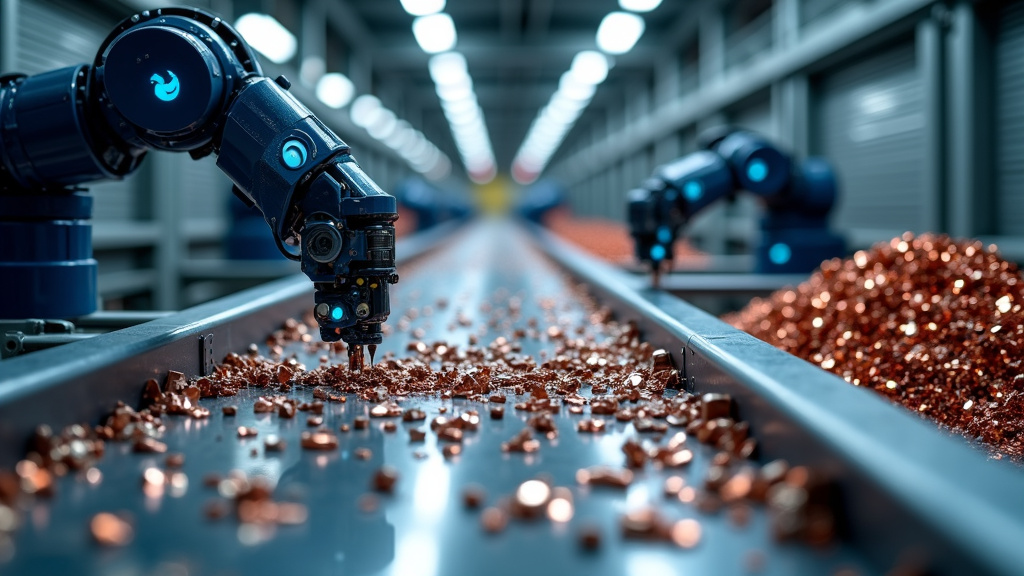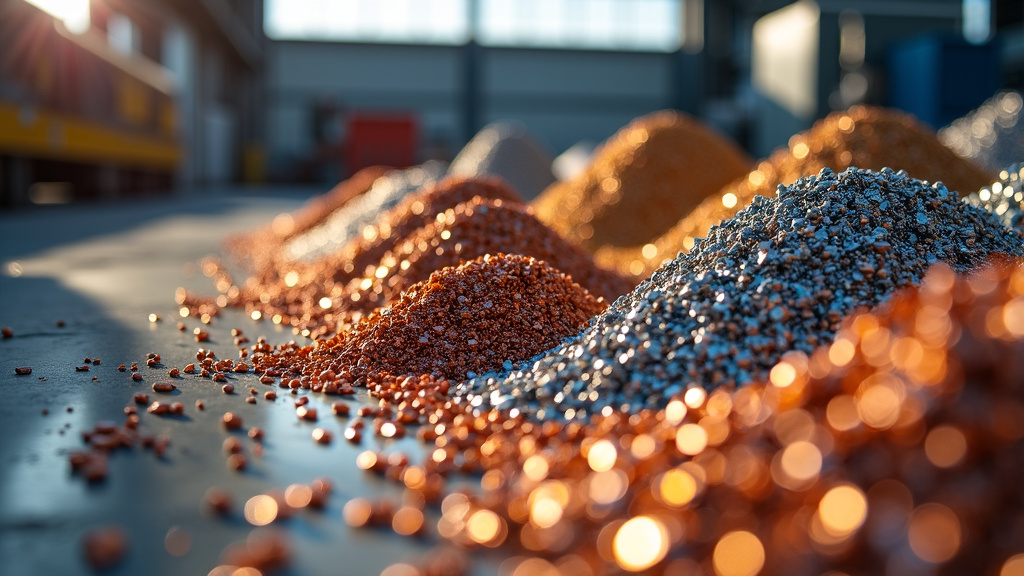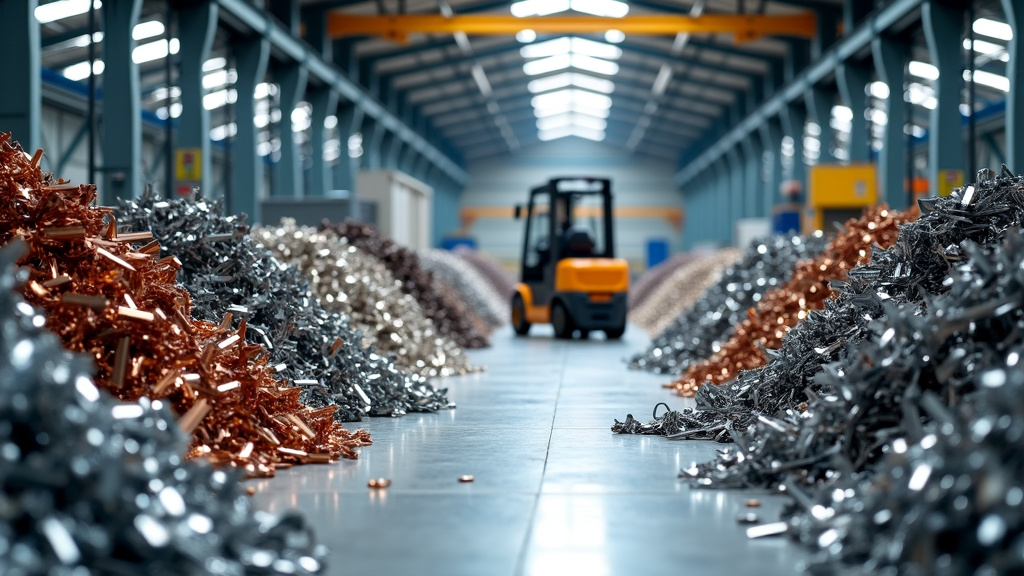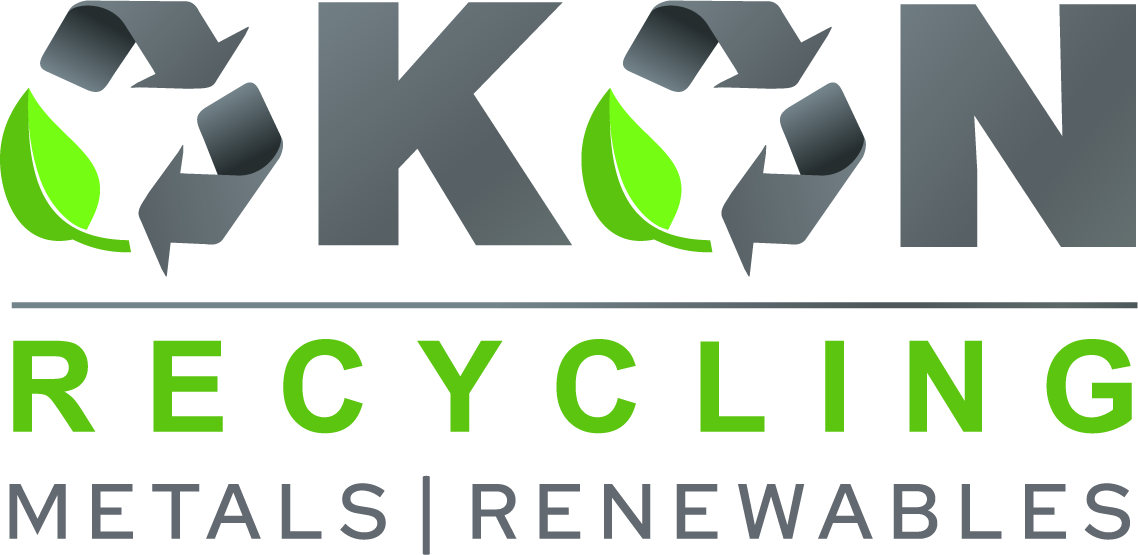5901 Botham Jean Blvd, Dallas, TX 75215
Metal Waste Removal: Sustainable Solutions Unveiled
April 2, 2025Did you know that over 50 million tons of metal waste end up in landfills annually? This statistic highlights the urgent need for effective metal waste removal strategies in industries worldwide. As businesses face increasing environmental concerns and stricter regulations, sustainable metal waste management has become crucial.
Metal waste removal goes beyond clearing factory floors or complying with local ordinances. It is a pivotal process within the circular economy, offering a way to significantly reduce industrial environmental footprints while unlocking economic opportunities. From small workshops to large-scale manufacturing plants, every business plays a role in this metal recycling movement.
In this article, we explore innovative strategies for metal waste removal and its essential role within the circular economy framework.
The Environmental Impact of Metal Waste

Metal waste significantly threatens our environment when improperly managed. From soil contamination to water pollution, the consequences of negligent metal disposal practices are extensive and often devastating. This section explores how metal waste impacts our ecosystems and why businesses must prioritize responsible waste management.
Soil contamination is one of the most immediate and visible effects of improper metal waste disposal. When metals leach into the ground, they can alter soil chemistry, affecting its fertility and ability to support plant life. These changes can have severe consequences for soil health and agricultural productivity, disrupting local ecosystems and potentially entering the food chain.
Water pollution is another critical concern. Metal waste that enters rivers, lakes, and groundwater can have dire consequences for aquatic life. Heavy metals like lead, cadmium, and mercury are particularly troublesome, as they accumulate in fish and other marine organisms, leading to long-term ecological damage and posing risks to human health through contaminated water supplies and seafood consumption.
Air Quality and Carbon Emissions
The environmental impact of metal waste extends beyond soil and water. Improper disposal methods, such as incineration, can release toxic gases and particulate matter into the air, contributing to poor air quality and respiratory health issues in nearby communities. Moreover, the production of new metals to replace wasted resources leads to increased carbon emissions, exacerbating climate change concerns.
Habitat destruction is yet another consequence of irresponsible metal waste management. Landfills overflowing with metal waste encroach on natural areas, displacing wildlife and disrupting delicate ecological balances. The aesthetic impact of metal waste littering landscapes can also deter tourism and outdoor recreation, affecting local economies that depend on these industries.
To illustrate the tangible effects of metal pollution, consider a local pond near an industrial area. Once a thriving ecosystem, home to various fish species and a popular spot for migratory birds, it could become a lifeless body of water, its shores littered with rusting metal debris, and its waters too toxic to support aquatic life.
The Business Imperative for Responsible Waste Management
Given these stark realities, it’s clear that businesses have a crucial role in mitigating the environmental impact of metal waste. Adopting responsible waste management practices isn’t just an ethical choice—it’s an economic necessity. Consumers increasingly favor environmentally conscious companies, and regulations around waste disposal are tightening globally.
Implementing effective metal recycling programs can significantly reduce the amount of waste ending up in landfills or polluting ecosystems. Businesses can set up collection points for different types of metals within their workplace, encouraging employees to participate in recycling efforts. This not only reduces waste but can also generate revenue through the sale of scrap metal.
| Environmental Aspect | Impact of Metal Waste |
| Soil Contamination | Alters soil chemistry, affecting fertility and plant life. |
| Water Pollution | Heavy metals accumulate in aquatic life, posing ecological and human health risks. |
| Air Quality | Improper disposal releases toxic gases, affecting respiratory health. |
| Habitat Destruction | Landfills with metal waste encroach on natural areas, disrupting ecosystems. |
Innovative Techniques in Metal Waste Removal

The metal recycling industry is experiencing significant changes, with new technologies reshaping how valuable materials are processed and reclaimed from waste. Leading this change is advanced sensor-based sorting, a transformative approach that greatly enhances the efficiency and effectiveness of metal waste removal.
A key development in this area is the use of X-ray fluorescence (XRF) technology. This method utilizes high-energy X-rays to identify and separate different metals with precision. Recycling International highlights companies like SGM Magnetics and Cleansort, which are using Laser-Induced Breakdown Spectroscopy (LIBS) alongside XRF to advance metal sorting capabilities.
How does this technology work? Picture a conveyor belt carrying mixed metal waste—aluminum cans, copper wiring, steel fragments, and various alloys. As the material passes through the XRF system, it is exposed to X-rays. Each metal emits a unique spectral signature, which is analyzed in real-time by advanced algorithms, enabling accurate identification and categorization.
The Power of Artificial Intelligence in Metal Sorting
The integration of artificial intelligence (AI) and machine learning has elevated metal waste removal. These systems adapt and enhance their sorting accuracy over time, learning to recognize new alloys or contaminants. This adaptability is crucial in an industry where waste composition can change rapidly.
AI-powered vision systems now analyze the shape, size, and surface characteristics of metal scraps, allowing for sorting based on potential end-use or recyclability. For example, the system can differentiate between high-grade copper for electrical applications and lower-grade alloys for less demanding uses.
The environmental benefits of these advanced sorting technologies are substantial. By increasing the purity of sorted metal streams, energy use for downstream processing is reduced, along with the need for harsh chemicals. This makes recycling more cost-effective and significantly reduces its environmental impact.
Electromagnetic Separation: An Old Technique Made New
While electromagnetic separation is not new, recent innovations have revitalized this method. Modern electromagnetic separators use powerful rare-earth magnets and controlled magnetic fields to sort ferrous and non-ferrous metals efficiently.
A notable application combines electromagnetic separation with eddy current technology, allowing for the separation of non-ferrous metals like aluminum and copper, which are not magnetic but conductive. These metals, when passing through a changing magnetic field, generate eddy currents that create a repulsive force, separating them from non-metallic materials.
Latest eddy current separators process materials at higher speeds, with some systems sorting several tons of mixed metal waste per hour. This capability is crucial for managing the growing volume of electronic waste and other metal-rich discards.
Chemical Innovations in Metal Recovery
Besides physical sorting, chemical processes play a crucial role in modern metal waste removal. Hydrometallurgical techniques, which use aqueous chemistry to extract and purify metals, are becoming more sophisticated and environmentally friendly.
Research is focusing on bio-based solvents and non-toxic leaching agents to recover precious metals from electronic waste. These methods selectively dissolve specific metals, enabling efficient extraction without harmful emissions from traditional smelting. This is especially valuable for recovering rare metals like gold, silver, and palladium from complex e-waste streams.
As metal waste removal technology advances, the future looks promising for the recycling industry. These innovations not only improve metal recovery efficiency but also change our relationship with waste, transforming it into a valuable resource. For tech-savvy readers and industry professionals, following these developments offers an exciting journey into sustainable materials management.
| Technology | Principle | Applications | Advantages | Limitations |
|---|---|---|---|---|
| XRF (X-Ray Fluorescence) | Uses X-rays to excite electrons, causing emission of secondary X-rays characteristic of elements present. | Metal, glass, plastic, and mining industries. | High purity sorting, minimal maintenance, versatile applications. | Difficulty with light metals like silicon and magnesium. |
| XRT (X-Ray Transmission) | Separates materials based on absorption characteristics of X-rays. | Mining and metal industries. | Quick, precise, non-destructive. | Heavy maintenance, cannot sort individual heavy metals. |
| DMS (Dense Media Separation) | Uses density to separate materials; heavy items sink, light items float. | Efficient in recovering aluminum from heavy metals. | Long-lasting system, no need for frequent upgrades. | Limited in distinguishing between distinct types of metals. |
Economic Benefits of Proper Metal Waste Removal

Effective metal waste removal practices offer substantial economic advantages for businesses across various industries. By implementing robust recycling and resource recovery processes, companies can access multiple revenue streams while reducing costs and enhancing their environmental credentials.
A significant economic benefit comes from resource recovery. Instead of paying to dispose of metal waste in landfills, businesses can reclaim valuable materials for reuse or resale. According to the Metal Recycling Market Analysis report, the global metal recycling market was valued at $850.04 billion in 2023 and is projected to grow at a compound annual growth rate of 4.0% from 2024 to 2030. This growth highlights the economic potential in managing and recycling metal waste properly.
Cost savings from reduced disposal fees are another key economic benefit. As landfill space becomes scarce and expensive, diverting metal waste from landfills can significantly reduce waste management costs. Additionally, many jurisdictions impose heavy fines for improper disposal of metal waste, making proper removal practices essential to avoid penalties.
| Year | Market Revenue (USD Million) | Growth Rate (CAGR) |
|---|---|---|
| 2023 | 850,040.4 | – |
| 2030 | 1,135,279.1 | 4.2% |
Case Study: Alcoa’s Recycling Success
Alcoa, a global leader in lightweight metals technology, exemplifies the economic benefits of proper metal waste removal. In 2015, Alcoa implemented an aggressive recycling program focusing on recovering and recycling aluminum scrap.
The results were remarkable. By 2020, Alcoa reported a recycling rate of over 75% for its aluminum products, significantly reducing its reliance on virgin materials. This initiative led to substantial cost savings in raw material procurement and generated new revenue streams from the sale of recycled aluminum to other manufacturers.
Alcoa’s CFO reported that the company’s recycling efforts contributed to a 15% reduction in overall production costs and generated an additional $300 million in revenue from recycled materials sales in 2020. These figures highlight the substantial economic potential of effective metal waste removal and recycling practices.
Environmental Compliance and Corporate Image
Beyond financial benefits, proper metal waste removal enhances a company’s compliance with environmental regulations. As governments worldwide tighten restrictions on industrial waste, businesses that proactively manage their metal waste position themselves favorably with regulators and avoid costly fines or sanctions.
Effective metal waste management can also significantly boost a company’s corporate image. As consumers and investors increasingly prioritize sustainability, demonstrating commitment to responsible waste management can enhance brand reputation, attract environmentally conscious customers, and potentially open doors to new business opportunities.
For instance, a recent market analysis revealed that companies with robust metal recycling programs reported a 20% increase in positive brand perception among consumers, translating to tangible benefits in customer loyalty and sales.
In conclusion, the economic benefits of proper metal waste removal are multifaceted and substantial. From direct cost savings and new revenue streams to enhanced regulatory compliance and improved corporate image, effective metal waste management represents a significant opportunity for businesses to boost their bottom line while contributing to environmental sustainability.
Choosing the Right Metal Waste Removal Partner

Choosing an experienced and reliable metal waste removal partner is essential for businesses aiming to enhance sustainability and streamline operations. As environmental responsibility becomes a priority, collaborating with a reputable recycler can offer significant benefits.
When evaluating potential partners, consider factors like industry expertise, technological capabilities, and a commitment to environmental stewardship. An established recycler with a solid track record can offer valuable insights and tailored solutions to meet your specific waste management needs.
Okon Recycling is a trusted choice for comprehensive metal waste removal solutions. With over a century of experience, Okon brings unparalleled expertise and a forward-thinking approach to metal waste management. Their long-standing presence in the field demonstrates reliability and adaptability to evolving industry standards.
By partnering with an experienced recycler like Okon, businesses can optimize waste removal processes, reduce environmental impact, and potentially generate additional revenue from recyclable materials. Such partnerships often lead to improved operational efficiency and enhanced brand reputation through a demonstrated commitment to sustainability.
We encourage you to evaluate your current metal waste removal practices and consider the long-term benefits of collaborating with an industry leader. To explore how Okon Recycling’s comprehensive solutions can benefit your business and contribute to your sustainability goals, contact Okon Recycling at 214-717-4083.
